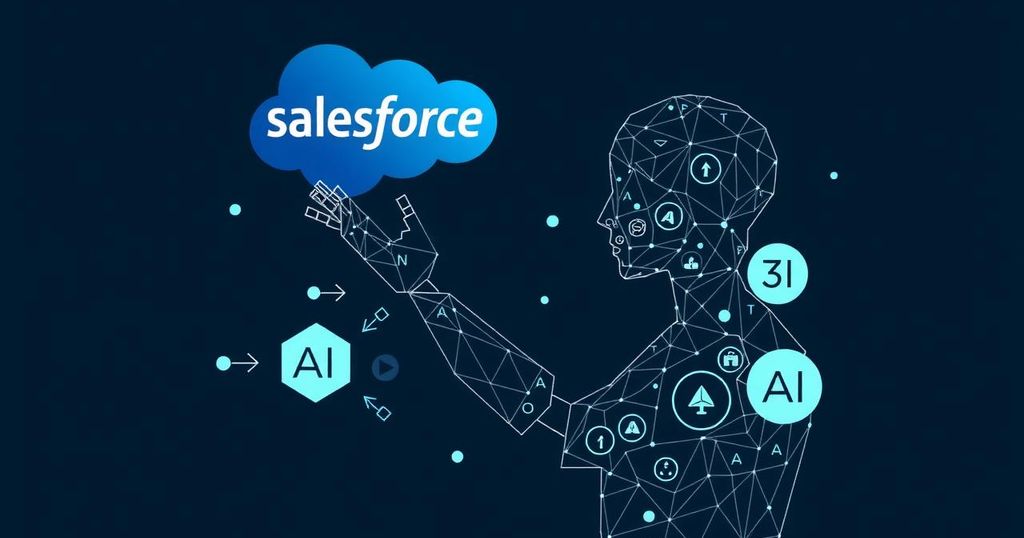Summary
On Thursday, significant advancements were unveiled by OpenAI and Salesforce, underscoring the technology sector’s initiative to grant greater decision-making capabilities to artificial intelligence (AI) systems, even amidst nagging apprehensions regarding such technologies’ inherent limitations. This shift is noteworthy as it aligns with a broader trend of increasing the autonomy and analytical proficiency of generative AI (genAI), potentially enhancing operational efficiency while simultaneously escalating associated risks. OpenAI introduced a new model, o1 (formerly known by the codename Strawberry), which incorporates a mechanism for pausing to assess various avenues of response prior to formulating an answer. The organization asserts that this new approach significantly enhances the model’s performance when addressing intricate inquiries, particularly in fields like mathematics, science, and computer programming. Conversely, Salesforce launched Agentforce, aiming to evolve the function of generative AI from merely serving as a productivity tool to a framework where AI agents could undertake actions independently while being constrained by defined parameters. Real-world applications of these advanced AI systems have commenced, with early adopters reporting positive outcomes. For instance, Thomson Reuters, which provided early access to OpenAI’s o1 for its legal division, CoCounsel, noted superior performance in tasks necessitating nuanced analysis and stringent adherence to specific documentation. Jake Heller, the product lead for CoCounsel, remarked, “Its careful attention to detail and thorough thinking enables it to do a few tasks correctly where we have seen every other model so far fail.” Heller acknowledged that while responses might take longer, professionals often prioritize receiving thorough and accurate answers over quick, potentially erroneous responses. Similarly, Wiley reported a substantial improvement in operational efficiency utilizing an early version of Agentforce, achieving over a 40% increase in case resolution rates compared to its previous chatbot systems. Executives at Salesforce and affiliated organizations emphasize that the critical element of ensuring safety amid this newfound autonomy lies in the implementation of stringent limitations regarding the scope and decision-making authority granted to AI agents. Paula Goldman, Salesforce’s chief ethical and humane use officer, cautioned against providing AI with unrestricted autonomy, advocating for structured frameworks under which AI systems can operate safely and effectively. Likewise, Miriam Vogel, CEO of EqualAI, advised caution against deploying AI agents in high-stakes scenarios where decisions could significantly impact individuals’ welfare or safety, which may expose organizations to legal liabilities. Moreover, Dorit Zilbershot, the Vice President of Platform and AI Innovation at ServiceNow, conveyed that while the introduction of AI agents capable of interacting with enterprise data has the potential to revolutionize business processes, it simultaneously imposes a substantial degree of responsibility on organizations. ServiceNow ensures that, initially, all actions planned by AI agents must receive human approval before being enacted autonomously. Nevertheless, there exist concerns regarding the potential for autonomous bots to enter competitive scenarios that may lead to inefficient, adversarial conditions. Phil Libin, co-founder and former CEO of Evernote, warned that many proposed use cases for AI agents could foster an environment akin to an arms race, where costs are escalated unnecessarily, benefiting only a select few actors. Furthermore, critics like Clement Delangue, CEO of HuggingFace, argue that characterizing AI processes as “thinking” misrepresents the capabilities of these systems, suggesting instead that they are merely executing complex data processing tasks. He termed such marketing practices as misleading. In conclusion, while the advancement of AI’s decision-making capabilities presents exciting opportunities, experts assert that the industry must first address fundamental challenges, including tendencies related to misinformation and biases inherent in current technologies. The path forward necessitates a balanced approach that embraces innovation while remaining cognizant of the attendant responsibilities and risks.
Original Source: www.axios.com

Leave a Reply